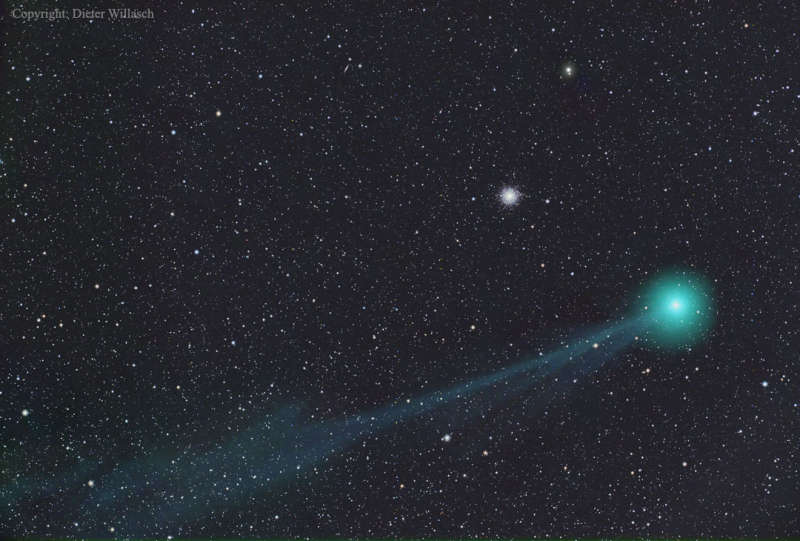
|
Credit & Copyright: Dieter Willasch
(Astro-Cabinet)
Explanation:
Comet Lovejoy has
become visible to the unaided eye.
To see the comet, just go outside an hour or so after sunset and
look for
a fuzzy patch to the right of
Orion's belt.
Binoculars and a star chart may help.
Pictured here, Comet
C/2014 Q2 (Lovejoy)
was captured three days ago passing nearly in front of
M79,
the globular star cluster visible as the bright spot slightly
above and to the left of the comet's green-hued coma.
The nucleus of Comet Lovejoy is a giant dirty iceberg that is shedding gas into a long and
intricate
ion tail, extending
across the image, as it nears the Sun.
The comet is expected to become even
easier to spot for northern observers during January, as it is rises earlier
and, hopefully, continues to brighten.
|
January February March April May June July August September October November December |
| ||||||||||||||||||||||||||||||||||||||||||||||||
NASA Web Site Statements, Warnings, and Disclaimers
NASA Official: Jay Norris. Specific rights apply.
A service of: LHEA at NASA / GSFC
& Michigan Tech. U.
Based on Astronomy Picture
Of the Day
Publications with keywords: comet - globular cluster
Publications with words: comet - globular cluster
See also:
- APOD: 2025 December 1 Á 3I ATLAS: Tails of an Interstellar Comet
- APOD: 2025 November 26 Á Globular Cluster M15 Deep Field
- APOD: 2025 November 25 Á Comet Lemmon and the Milky Way
- 3I/ATLAS: A View from Planet Earth
- APOD: 2025 November 17 Á Comet Lemmons Wandering Tail
- APOD: 2025 September 30 Á Comet Lemmon Brightens
- APOD: 2025 September 29 Á Two Camera Comets in One Sky
